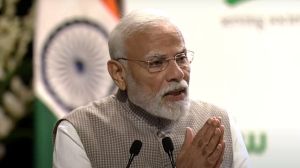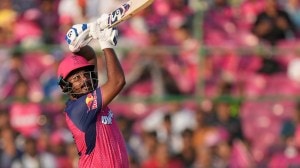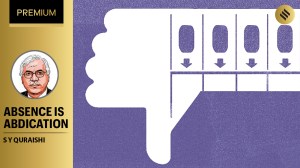Click here to follow Screen Digital on YouTube and stay updated with the latest from the world of cinema.
Baahubali 2: SS Rajamouli and other south directors have reinterpreted epics. Why Bollywood lags behind?
Baahubali The Conclusion, or Baahubali 2, is reinterpreting grandeur, scale and vision in Indian cinema. But before SS Rajamouli took it on, the term ‘epic’ has taken on multiple and varied meanings in Bollywood.
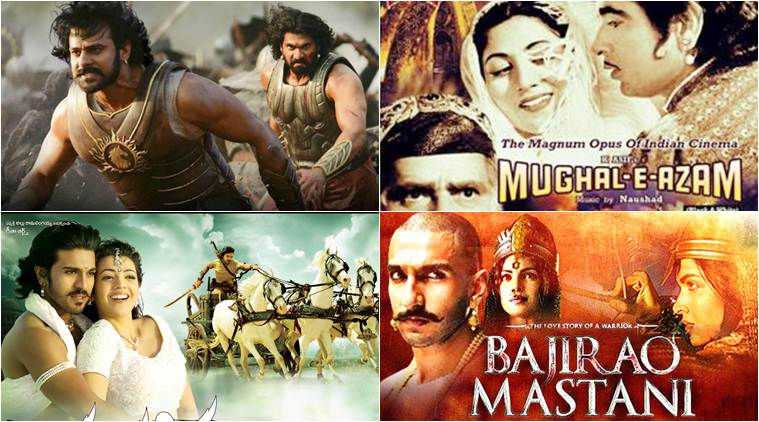 Completed at an estimated cost of Rs 250 crore, Baahubali: The Conclusion is already the costliest film ever made in India. The film has been called an epic, its genre being mythological/period fantasy.
Completed at an estimated cost of Rs 250 crore, Baahubali: The Conclusion is already the costliest film ever made in India. The film has been called an epic, its genre being mythological/period fantasy.
In 2015, the Telugu import Baahubali: The Beginning managed to achieve something that Big Brother Bollywood can only hope for – it blended spectacular, The Lord of the Rings-level VFX with a rooted and traditional Indian mythology narrative. With that one masterstroke, the film’s director SS Rajamouli succeeded in drawing largely home-bound masses (and the classes) away from their TV sets to the theatre making Baahubali: The Beginning not only one of the greatest box-office forces to ever rule the Indian marquee but also created enough hunger for the sequel. The wait for many Baahubali fans is now over. The film’s star-studded second and final instalment, Baahubali: The Conclusion with a repeat troupe of Prabhas as the superhero-like Shiva, Anushka Shetty as Maharani Devasena, Tamannaah as Avanthika and Rana Daggubati as the baddie Bhallaladeva, opens with much fanfare and loudly enthusiastic pre-release fireworks.
Completed at an estimated cost of Rs 250 crore, Baahubali: The Conclusion is already the costliest film ever made in India. The film has been called an epic, its genre being mythological/period fantasy. What is an epic? ‘Epic’ in cinematic context refers to a triumph of vision and imagination. It’s also about the scale and canvas. Note that mythological epics played a key role in the formative years of Tamil, Telugu and even, Hindi cinema. But over the years, in Bollywood, the term ‘epic’ has taken on multiple and varied meanings.
Also read | Baahubali 2 first review out from UAE and the critic is awed by everything
When it comes to filming on epic scale and blowing money like explosives, few native film industries in India can beat Telugu cinema, Andhra Pradesh’s home-grown popcorn factory. The country’s other regional cinema is still lagging behind miles in terms of lavish budgets. One of the earliest films to be mounted on a lavish scale in India was a Telugu blockbuster, 1933’s Savitri, a Mahabharata legend retold on cinema. Made at a budget of Rs 10 lakh, a hefty sum then, it was one of the most expensive films of its time.
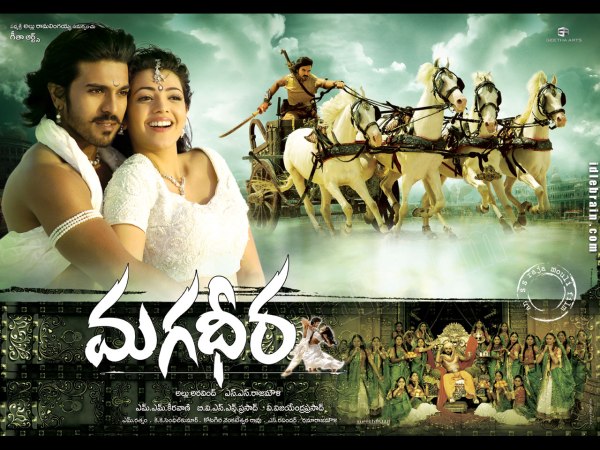 Poster of SS Rajamouli film Magadheera.
Poster of SS Rajamouli film Magadheera.
Most cinema historians cite Mayabazar, starring the then Telugu upstart NT Rama Rao (NTR) as Krishna, as a classic of the mythological genre. Its technical wizardry and extravagant visuals were far ahead of its time. Reportedly, at first, NTR was reluctant to take on the role of Krishna, and wanted to essay Karna but the director convinced him otherwise. After the smashing success of Mayabazar, Rama Rao, later the CM of Andhra Pradesh, went on to play Lord Krishna in 17 films. 1963 saw two legendary epics starring NTR, one retold from Ramayana and another, from Mahabharata. In Lava Kusa, NTR played Lord Rama while in Nartanasala, the popular star was seen as Arjuna from Mahabharata. NTR also dabbled in Tamil cinema with Sampoorna Ramayanam, 1958, where he was once again seen as Lord Ram while Sivaji Ganesan was Bharatha. 1965’s Thiruvilaiyadal was a Sivaji Ganesan epic that depicted the lives of Lord Shiva’s devotees in an episodic storytelling format. Karnan, 1964, was another Ganesan extravaganza in which he essays the titular role. A true passion project, the Tamil historical drama Chandralekha, released in 1948, was at one time the most expensive film ever made in India. Its director, SS Vasan sold his personal belongings to complete this epic. Its exquisite sets, sword fight scenes and intricately picturised dance sequences (its popular drum dance can be found on YouTube) has made Chandralekha a Tamil classic.
Also read | Baahubali 2 box office collection breaks Dangal record with 1 million online tickets sold in 24 hours
In all these films, the common thread is the messianic power of the Tamil and Telugu superstars, all of whom play Hindu mythological legends with whom the masses can connect with easily and even worship and a visual razzle dazzle all rolled into an epic show. That should explain why most legendary South Indian stars who made their name with mythological and historical epics went on to have successful innings as politicians. With their messianic popularity and God-like status, helped considerably by their movie persona, stars like MGR, NTR, M Karunanidhi and J.Jayalalitha took their theatrics to politics and made rhetoric flourish both their trademark and a political art.

In Bollywood, the term ‘epic’ takes on a different meaning altogether. One of Bollywood’s greatest epics is Mughal-E-Azam which may fail the historical accuracy test but works wonders as a dramatization of the Mughal court. The film’s roots lay in Parsi theatre. Its lavishly mounted songs, the classic music, and the overall grandeur along with legendary Urdu dialogue and dramatic performances by Madhubala, Prithviraj Kapoor and an understated Dilip Kumar makes Mughal-A-Azam one of the most-watched Hindi classics. The Nargis-starrer Mother India, of 1957, is sheer epic in terms of its scale and the narrative linked to the epitome of an Indian woman. Nargis is Mother India, a virtuous and quintessential Indian woman who can kill her son to save the honour of another woman. As Hindi cinema got into another stage, with our political and social landscape changing rapidly historical epics gave way to happy-go-lucky musicals of the 1960s and the emergence of the angry young man in the 70s. Talking of 70s, the star-studded Sholay springs to mind. The Spaghetti Western is pure fiction, with not a shred of history in it. But few films have reverberated in the Indian psyche as relentlessly and powerfully as the Ramesh Sippy dacoit drama.
In the following decades, the historical epic more or less disappeared, only making its presence felt in 2000s. Shah Rukh Khan appeared in Asoka, playing the Maurya dynasty emperor. Another Khan (Aamir Khan) tried his luck with the genre in Mangal Pandey: The Rising, but it tanked. Salman Khan’s Veer, with shades of 300 and other Roman gladiatorial epics, was grand and much-hyped but failed at the box-office, much like the star’s earlier dud Suryavanshi. Of contemporary stars, Hrithik Roshan seems to have a proclivity for epics. Ashutosh Gowariker’s Jodhaa-Akbar and the much-panned Mohenjo Daro, featuring the star, are cases in point. Also count Sanjay Leela Bhansali’s magnum opus Bajirao Mastani, based on the romance between Bajirao Peshwa and Mastani Bai.

As it turns out, SS Rajamouli, the director of Baahubali, himself is no stranger to epics. His 2009 blockbuster Magadheera starring Ram Charan was one of the highest grossing Indian epics of all time. As Baahubali’s final instalment enters the box-office battle fray (trade pundits are predicting massive ticket sales), it looks like Rajamouli’s magical run at the box-office will continue.
(Shaikh Ayaz is a writer and journalist based in Mumbai)


Photos
- 01
- 02
- 03
- 04
- 05













